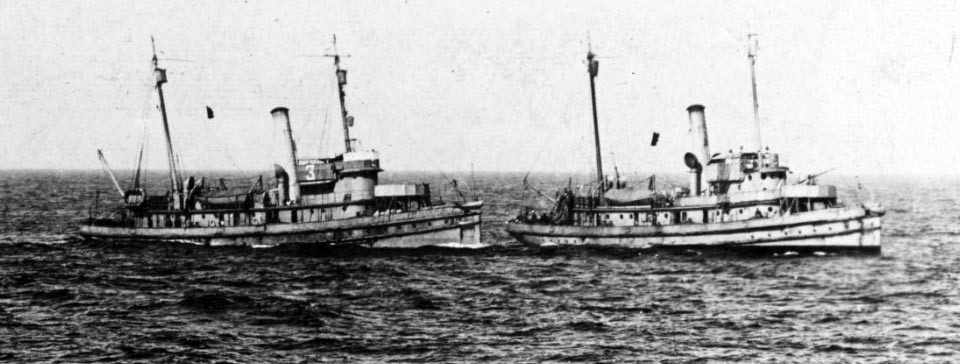
Clearing the Mines
Clearing the Mines
Following the Armistice, the mines were to be swept by the Allies in accordance with the treaties. Clearing the mines required ten times the assets that the mine laying had initially required. Eigthy-two ships worked for over five months and over 4,000 men were involved to remove the mines. The work was done mainly be reserve units. The sweepers finished clearing the mines in September 1919. To clear the mines, wooden ships were used first to determine how many mines were left, as steel ships would set off the mines. For this process, USS Red Rose and USS Red Fern were utilized in winter. Due to heavy weather, the operations were postponed until the spring. Rear Admiral Joseph Strauss also persuaded the British to borrow sixty British heavy-duty wooden hull steam trawlers to sweep the mines. USS Patapasco (AT-10) and USS Patuxent (AT-11) were fitted with innovative electrical protective devices that allowed steel ships to sever the antenna mine's mooring cables without actuating the mines. This device protected the ships but proved to be unpractical. Rear Admiral Strauss stated that he had never seen a finer spirit displayed or finer work performed by any body of men than existed in the mine force engaged in the hazardous peace-time work of mine sweeping. The minesweepers were laid-up, and mine counter-measures were pursued only through a few active naval leaders in the bureaus and fleets.
Image: NH 45255: USS Patapasco (AT-10) passing sweeping wire to USS Patuxent (AT-11), in the North Sea, 1919. U.S. Naval History and Heritage Command Photograph.



